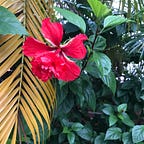The Kedayan People
Located in East Malaysia, Sarawak is the Southeast Asian nation’s largest state. To its East lies Brunei, a separate nation and Sabah, another state which along with Sarawak joined Malaya to form Malaysia in 1963. To their South lies Kalimantan which belongs to Indonesia. Altogether, Sarawak and Sabah (of Malaysia), Brunei, and Kalimantan (of Indonesia) are situated in Borneo, the world’s third largest island.
Centuries prior to today, various tribes from different ethnic groups ruled the remote parts of the island, some of which were head-hunters. One particular ethnic group we will focus today, found in Sarawak, is the Kedayan people (distinct from the Kendayan headhunting tribe in Kalimantan, Indonesia) who were and still are, largely an agricultural ethnic group.
According to the Sarawak State Department of Statistics (Jabatan Perangkaan Negeri Sarawak), a bulletin from 2011 gave a statistic of 15, 780 Kedayan people living in Sarawak [1]. The Kedayan community is said to have originated from Brunei. It was then during the sultanate of Sultan Bolkiah (1485 to 1524) that Brunei possessed an empire comprising much of the island Borneo and extending even to the Sulu islands and much of what is recognized as modern day Philippines. Hence, the expansion of the Bruneian empire may have contributed to the diaspora of the Kedayan people across Borneo in the past, which explains today’s Kedayan population to concentrate in districts such as Miri, Limbang, Lawas, Bintulu, and Sipitang [2] which lie outside of present-day Brunei.
Although this remains as a general observation that may apply to various cultures which are not exclusive to that of Sarawak’s and certainly does not apply as a blanket statement to all who identify as a Kedayan, the Kedayan people are known to a reserved and shy community but will soon open up to those who are foreign to their community once the ice is broken.
The Kedayan dialect is a central identity marker to distinguish them from the other ethnic groups found in Borneo, despite sharing many similarities with Bruneian Melayu. One key difference between the two seemingly similar tongues lies in the fact that in the Kedayan dialect, much of “r” sound found in Bruneian Melayu or in Melayu are dropped.
After every harvest, the Kedayan people will gather together with their families to perform a feast called “Makan Tahun.” The village or kampung (in Malay) comes alive with much work and expectation. The feast is held after every harvest as a sign of thanksgiving for receiving a bountiful harvest and to usher in a coming harvest which is even more plentiful than the one before.
The Kedayan people are considered a minority group in Sarawak although that is subject to change as communities develop but despite being “few” in contrast to the other ethnic groups in terms of number, they are neither the last nor the least in Sarawak, where diversity and solidarity are celebrated.
[1] https://m.facebook.com/BorneoOracle/photos/a.449424688437754/777242842322602/?type=3&locale2=it_IT
[2] http://spaj.ukm.my/jalhikmah/index.php/jalhikmah/article/view/239
